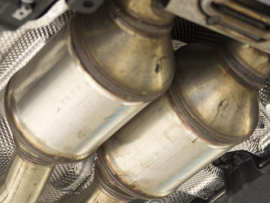
The brake system of new and old cars has not changed much over time. It is a hydraulic system. These systems are always filled with working fluid. Therefore, the brake fluid is an important part of the car’s braking system. It transmits the force of pressing the brake pedal to the working cylinders in the brake calipers, which press the brake pads against the brake rotor. Your safety depends on its condition and level in the brake system. If you change it regularly and remember to check the condition of the system, it will last a long time. This article explains why you should change the brake fluid and how often you should do it.
How Do Car Mechanics Typically Perform Brake Fluid Flush?
- Open the expansion tank;
- Easily unscrew the fittings involved in the pumping, on the brake cylinders of a particular circuit and pull the rubber hose over them;
- Dip the ends of the hose into a container with water and completely pump the fluid out of the system using the brake pedal or vacuum pump;
- Pour the new fluid into the tank until the hose is clear;
- Screw in the fittings and pump the fluid by depressing the pedal to remove air from the system. Once airless fluid is flowing from all four tubing hoses, remove the hoses and put the cap back on the tank.

Are Brake Fluid Flushes Important and Why?
Brake fluid is hygroscopic, which means that it tends to absorb moisture over time. Why is this dangerous? During braking there is a great deal of heat generated by the brake pads rubbing against the brake rotors. The heat quickly dissipates to nearby system components and of course to the working fluid. If the brake fluid is old, the moisture accumulated in it boils over. The appearance of steam in the hydraulic system leads to unstable operation, which is dangerous for the vehicle and its passengers.
There are two more reasons why brake system flushes are important. In cars with mileage, debris can build up in the brake system from constant operation, and the old brake fluid loses its properties preventing effective braking.
What Signs Drivers Usually Feel Before Brake Fluid Change?
- Issues with a brake pedal, it becomes softer;
- At the dashboard, an ABS light is on;
- Brakes aren’t working really well, not as on the new car;
- OBD2 diagnostics codes related to brakes was got from ECU;
- A burning smell occurs;
How To Check Brake Fluid Level?
The brake fluid level is visible in the expansion tank of the brake system. It is usually made of semi transparent plastic. With a visual inspection you can easily see both the level and the color of the fluid.
Before you start:
- In the owner’s manual, find where the brake fluid tank is located or find it manually under the hood;
- Make sure your vehicle stands on a horizontal and flat surface;
- The engine must be turned off before inspection;
Keep in mind that a change in color of brake fluid over time indicates a change in its properties, and a drop in level indicates a more serious problem. The brake fluid level should not decrease. If you notice it, it means air may be leaking into the brake system and there is less fluid due to leakage.
How To Test Brake Fluid Quality?
Together with a level check, it is important a brake fluid quality be tested. In the case of using hygroscopic types of fluid, like DOT 3 – quite often the volume of water in brake fluid exceeds the normal or even permissible level. When the vehicle is regularly maintained, has all periodic maintenance well done, then brake fluid changed by default in that time, when it must be changed. But how do you can to know what happens with brake fluid if the car was not maintained properly? In this case perform a level test, visual test, and a quality test. If during these checks there are will be critical issues like a lot of water in brake fluid, then we should drain the fluid and perform a brake system flush. After this is done, the system must be fulfilled with new brake fluid.
We do an efforts to find, research and recommend the best products. So, we may receive commissions from purchases that you make after following the links in our product reviews.










